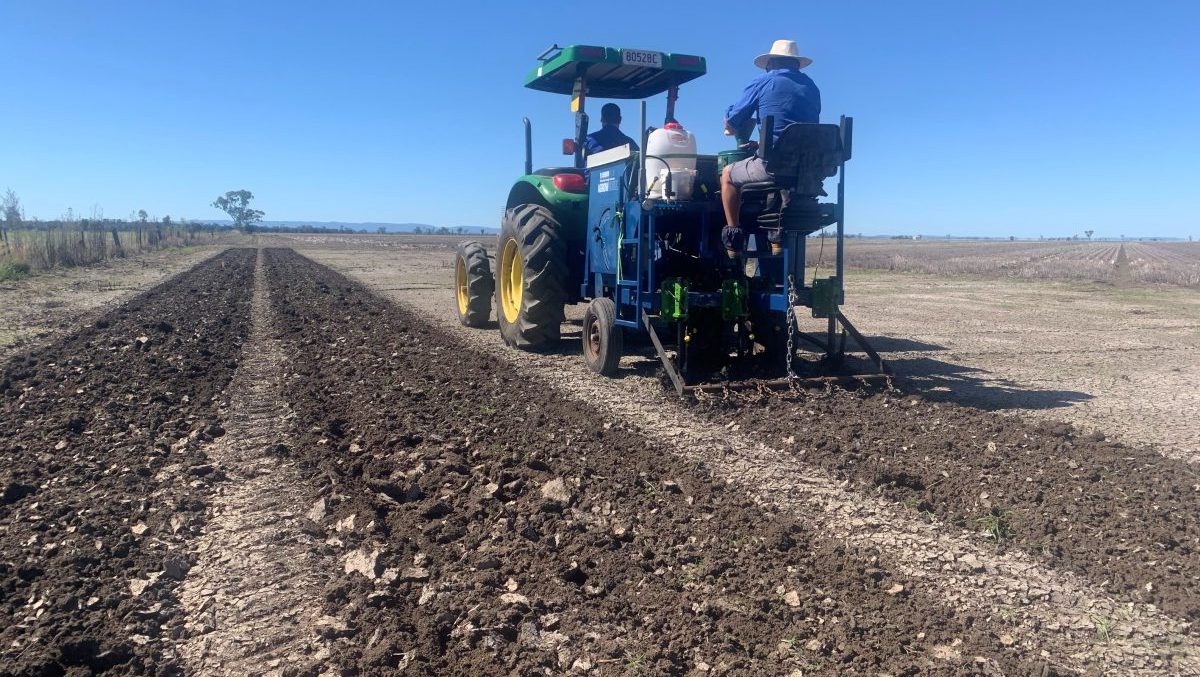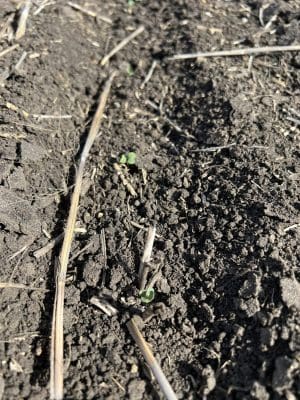
Pioneer is sowing its largest ever trial program in Qld this year. Photo: Pioneer Seeds
WHILE Australia’s canola area is expected to dip this year from its record, Queensland is on track to plant its biggest ever area.
ABARES numbers indicate Queensland in 2022-23 produced a record 10,000t of canola from 5000ha, up from 4700t from 2300ha in 2021-22, and early indications are the 2023-24 numbers could continue the record-breaking run.
Australia is the world’s second largest canola exporter, behind Canada, and in 2022-23 grew a record 8.3 million tonnes from 3.9M hectares; early indications are the crop now being planted across Australia will drop by at least 10 percent.
Queensland does not have a dedicated canola-crushing facility, but the seed is a welcome input into locally produced stockfeed mixes, and the state’s handful of growers have found there is a market for canola cut for hay even if the crop gets hit by frost or a dry finish.
Expanded trials
Pioneer Seeds is now planting a series of large-scale and small-plot canola hybrid demonstration and yield-tested trials this year in Queensland, with sowing dates ranging from early April to mid-May.
Small-plot trials are going in at Dalby and Dulacca, as well as Moree and Boggabilla in northern New South Wales, and a large-scale 30-40ha site comprising six different hybrids is being planted at Jandowae.
Pioneer Seeds technical support manager Ken Haxen said the trials were being run to respond to increased interest in canola in the region, spurred by grain-market opportunities, its grazing value, and the ability to cut it for hay.
It is also shaping up as a break crop in winter-crop rotations.
“The plant’s taproot can improve soil structure for subsequent crops as well as reach nutrients not accessible at depths that cereals can reach,” Mr Haxen said.
Pioneer’s trials are being sown to demonstrate the performance and phenology of its Y Series Clearfield varieties, as well as a triazine-tolerant and CL PY520T variety.
“They’ll provide an educational platform to deliver agronomic and technical learnings for best management for optimised crop performance, and assist growers and advisors to make informed decisions when selecting the right hybrid for the planting opportunities in their area.”
A lack of suitable varieties and tailored agronomy has long been seen as a limiting factor in canola’s uptake north of the border, and Pioneer hopes its trials and varieties will help address this.
“It is important to select proven hybrids and understand their flowering habits and maturity to mitigate frost risks early in the season, and heat at the back end of the season.
“The key to this is to understand the crop’s phenology…under the influence of seasonal variations.”
“As canola hybrids are chosen to be grown further north, we have seen them behaving differently to how they behave in the south, which is why this testing is so important to guide us; we don’t have to rely on southern region data and experiences.”
Pioneer Seeds works in partnership with Corteva Agriscience on its trialling program in Australian cropping conditions.
“That gives us confidence that a number of the products in our portfolio will be suitable performers in this northern NSW and southern Queensland cropping region.”
Pioneer Seeds canola is even being grown commercially this year in Central Qld as well as on the Atherton Tablelands in Far North Qld.
“There are plenty of opportunities to grow canola if we can help growers understand how it works in these areas and help them select the right hybrids to suit.”
Biggest area for Wise family
The Wise family at Bowenville, east of Dalby, have been growing canola on and off since 2013-14.
They were inspired to trial it by the success of wild turnip, a brassica relative of canola.
“We looked at turnip every year and thought: ‘Gee, that grows well — maybe we should give canola a go’.”
Their first crop got frosted and yielded 0.5t/ha over 90ha, but Mr Wise said even a frost-affected result produces a marketable option, with seed going to PB Agrifood in Toowoomba.
“If we cut it for hay, we’ve got a couple dairy guys who are keen to get it.”

Canola sown this month germinates on the Wise family’s farm at Bowenville. Photo: Lance Wise
They are in the midst of planting their biggest ever area, 276ha, and Lance Wise said the crop’s benefits in the rotation and its marketability have weighed in its favour.
Their best yield to date was around 1.5t/ha in 2021 from 42ha, and Mr Wise said it could have been higher had shattering not cost them a chunk of their yield potential.
“We harvested almost a month late, and we lost half of it because we were late getting to it.”
With an ideally timed start this year into good subsoil moisture, and planted into country which Mr Wise hopes can avoid September frosts if they come, double that seems achievable.
“Our hope is 3t/ha this year.”
This year they are planting into wheat stubble, and expect to follow the canola with wheat next year.
“We grew wheat after canola and it went really well, about 5t/ha.”
The Wises are growing PY520T for the first time this year, in addition to Pioneer 45Y95CL.
“It gives us another chemistry to work with.”
Chosen over pulses
The Wises have grown mungbeans, fabas and chickpeas in the past.
Mr Wise said without rain in the flowering window, limited podding means low yields, and the stubble and root systems pulse crops leave behind provide little groundcover.
Their rotation comprises around one third summer crops, mainly sorghum, and the balance winter crops, with wheat rather than barley expected to round out the winter program this year.
Canola’s ability to counter nematode build-up, as well as its resilient stubble, is a further plus.
“Even a Kelly chain over the top keeps the root system in the ground.”
“Fabas are becoming a thing; there are a lot more area of fabas going around here now.”
Mr Wise said the faba bean’s ability to fix nitrogen made it a compelling crop to grow, but not one for them this year.
“If you want a decent crop of legumes, you need decent rainfall.”
The Wises are planting their canola with 100kg/ha of urea.
“We’ll be prepared to come back two times to keep things boosted, if the season provides, so if we get decent rain, we might put on another 100kg of urea maybe over two applications.
“The more we can feed it will be beneficial, rather than getting it all up front.”
The Wises crop on variable soil, and this year used a precision planter on 30-inch row spacings to get better seed singulation through twin discs, and are doing a second pass between the rows to get 15-inch spacings.
“We go from good self-mulching black soil to rocky chocolate soils, and canola is going into heavier soil with red pieces.”
Grain Central: Get our free news straight to your inbox – Click here

HAVE YOUR SAY